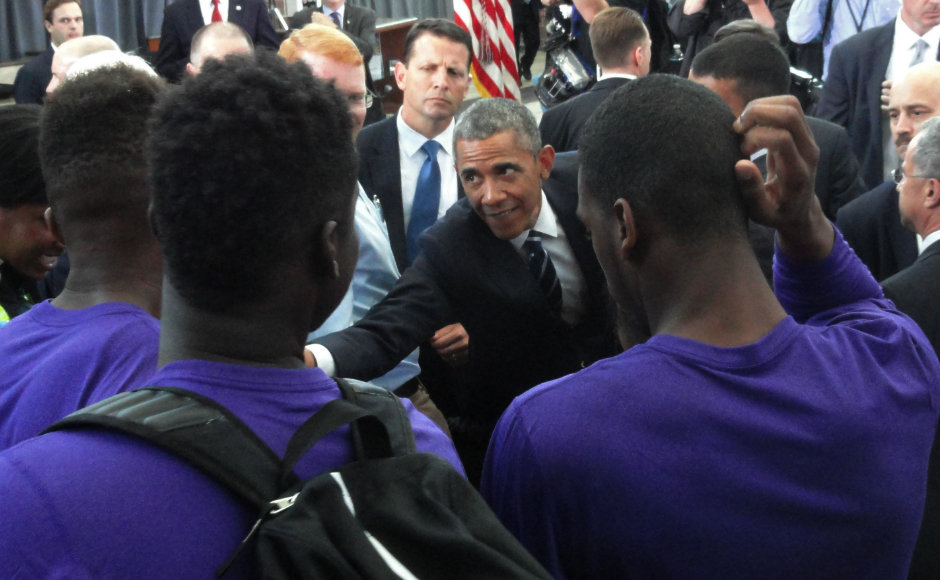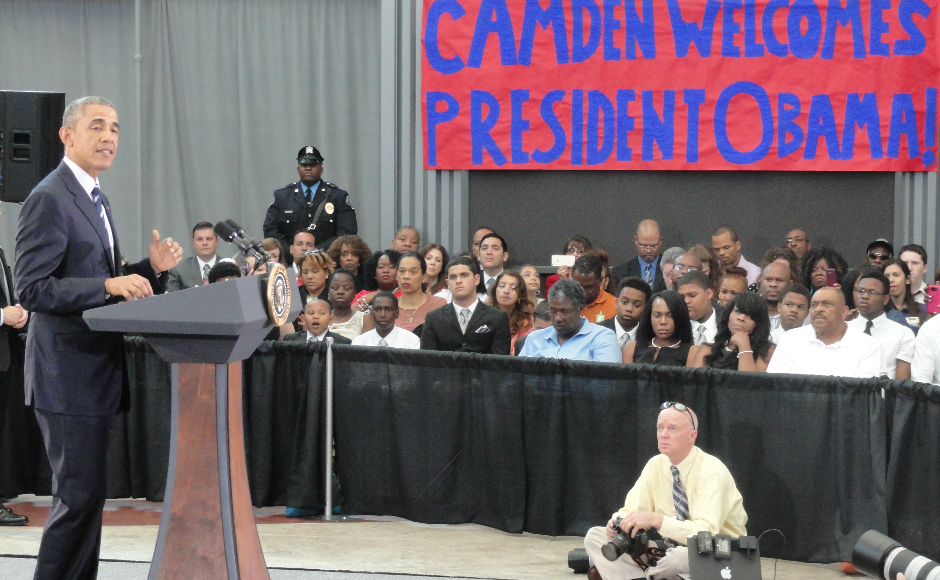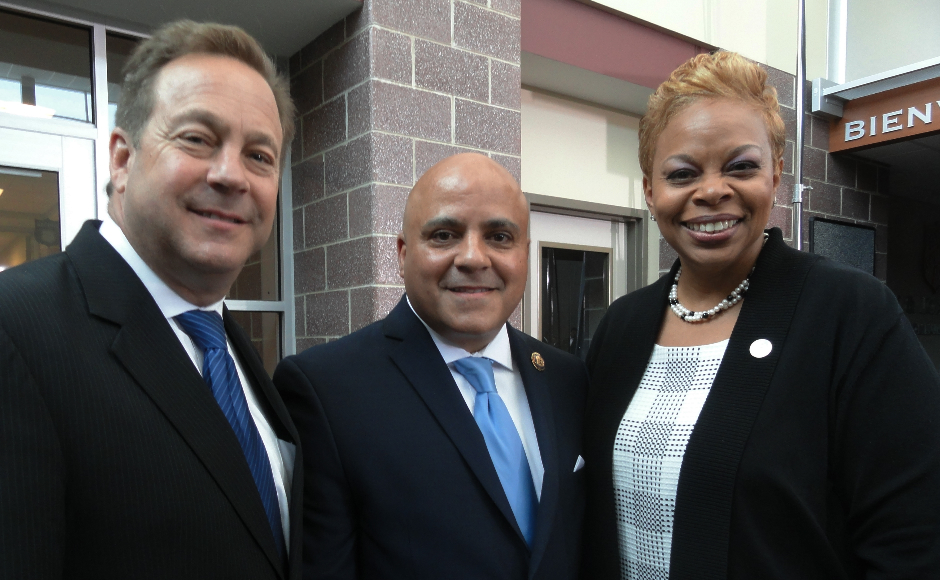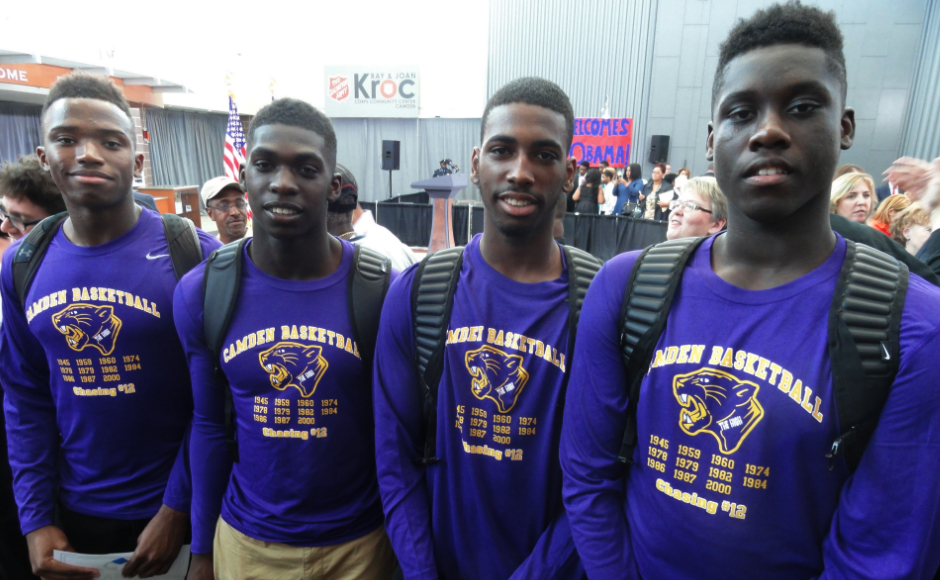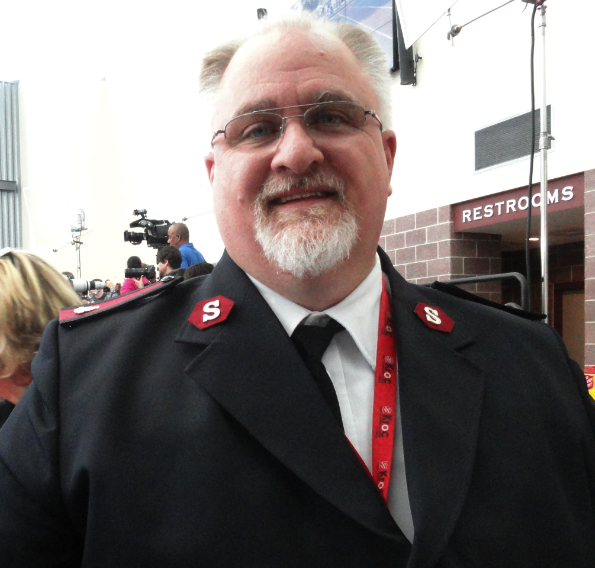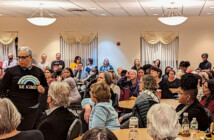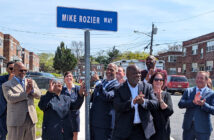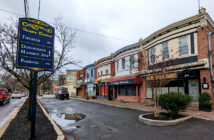The President touted the symbolic recovery of ‘the most dangerous city in America’ as a beacon of hope for a country struggling with systemic police violence and racial tensions.
By Matt Skoufalos
President Barack Obama visited Camden City on Monday “to do something that would have been unthinkable” as recently as a year or two ago, he said: “to hold Camden up as an example of promise.
“If it’s working here, it can work anywhere,” he said. “You’ve made real progress in just two years. Other cities across America can make similar progress.”
The president lavished praise on a police department that he said is helping to revive a city on the brink.
At the same time, he asked Camden City and the country to take a longer view about the fundamental problems that underpin the need for such an intensive rescue.
“We can’t ask the police to contain and control problems that the rest of us aren’t willing to face or do anything about,” Obama said.
“If we as a society don’t do more to expand opportunity to anybody who’s willing to work for it, then we’ll end up seeing conflict between police and residents. If we as a society aren’t willing to deal honestly with issues of race, then we can’t expect police departments to solve these problems.”
Despite rattling off some measurable indicators of success—violent crime down 24 percent, murder down 47 percent, open-air drug markets down 65 percent, response time for 9-1-1 down from one hour to 5 minutes—Obama said Camden is “still a job in progress.
“Nobody’s suggesting that the job is done,” he said.
Some communities “have had the odds stacked against them for decades,” Obama said; “not only cities, but suburbs where jobs can be tough to find not just because of economics but because of transportation and development paths.”
He cited systemic issues of imprisonment, economic opportunity, social justice, and de facto segregation as contributing to the growing burden facing communities like Camden.
“We can’t ask the police to solve the problems when there are no able-bodied men in the community,” Obama said.
“We all want safety. If we’re spending a lot of money on prisons and we don’t have enough money for books or computer programs or teachers in our schools, we are being counter-productive. It’s not a good strategy.”
Obama spoke about the necessity for police to build lasting, individual relationships within their communities, the better to intercede in the lives of residents before and beyond the point of crisis.
“We’ve got to feel like they’re our kids,” he said. “We’ve got to see our children in their eyes. We haven’t done enough of that. But we can.
“This is a moment of great promise,” the president said; “this is a moment of great hope.”
Obama concluded by borrowing from Walt Whitman: “In a dream, I see a country invincible—if we care enough to make the effort.”
Promise of opportunity
“President Obama inspires hope and change and the promise of a new day in Camden,” said Mayor Dana Redd. “We are looking forward to implementing the Promise Zone initiative.”
The Promise Zone program represents “a comprehensive approach to reducing poverty” that Redd said will enable Camden City to seek some $30 million in federal grants to reduce violence, create economic opportunity, increase affordable housing, and improve academic outcomes.
It’s no small set of challenges for a city dubbed the most dangerous in America—a title, Redd said, “that neither I nor our citizens are proud of.”
Yet in an age in which police work has become synonymous with fatal violence in places like Ferguson, New York, and Baltimore, erasing the “most dangerous” title requires a greater focus on building relationships among law enforcement and the communities they police.
“We work very closely to make sure there’s cultural sensitivity embedded in our police department,” Redd said. “It’s not just enforcement, it’s also prevention and intervention.”
One of the effects of that violence is the stagnation of economic development and education in a destabilized community. It’s a tale that the Camden mayor, who lost her parents to gunplay at age eight, knows all too well.
Despite her acceptance letter, a four-year college program was not a true option for a teenaged Redd, who forewent those opportunities because she had a younger sibling to mind. She spoke of working to build a “cradle to college to career” as well as a “cradle to career” track of experiences for the youth of her city so they don’t feel that their lives are predestined to be cut short by violence.
“We have to work with our young people to change that mindset,” Redd said.
‘Nine square-miles on the verge of coming back’
“We have our real challenges here,” said Camden City Council President Frank Moran, who also described his hometown as “nine square-miles on verge of coming back.
“The president is an exclamation point on that,” he said. “This is a monumental day for us.”
Beyond establishing a stable community, Moran said that it is the task of Camden City leadership to build a thriving one as well.
He said that recent tax incentives to lure established businesses to the city are the seeds of a larger renaissance yet to come, even if residents are not immediately prepared to assume some of the skilled jobs those incentives create.
“This creates foot traffic in the downtown area,” Moran said. “It’s our job to encourage our children in school so they can compete and be employed in the city in which they’re born.”
‘A strong third destination’
With community policing a focal point of Obama’s visit, Major Paul Cain of the Salvation Army said that he was “thrilled and honored” to host the president at the Ray and Joan Kroc Salvation Army Corps Community Center.
The Kroc Center exemplifies the priorities of those community relationships, Cain said, stressing its partnership with the Camden County Police Metro Division as an ongoing commitment to the same.
He said it’s “not unusual” to find officers playing basketball with residents here or just hanging out.
“One of the tenets of community policing is to hang out where the people are,” Cain said. “Don’t just show up when something’s happening.”
Nearly half of the center’s employees are Camden City residents, Cain said, and some 30 percent of its 7,000 members hail from beyond the city limits. He described the center as “a piece of the puzzle to get jobs to come here.
“Beyond school and work, for healthy lives, you need a strong third destination,” Cain said; “a place to relax and have fun.”
“What Camden needs isn’t necessarily what the president or federal government can do,” Cain said. “We need to trust each other and depend on each other more; to feel safe on the street.”
Get more local news that matters. Check out NJ Pen on Facebook and Twitter.

